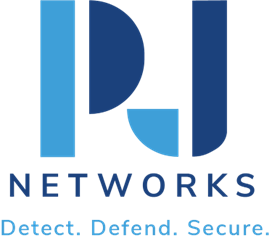Cost Savings and Efficiency: The P J Networks SD-WAN Advantage
As businesses expand their digital footprint, they increasingly require agile and cost-effective networking solutions. Software-Defined Wide Area Networking (SD-WAN) is reshaping how organizations manage their networks. By focusing on cost savings and efficiency, SD-WAN offers the P J Networks Advantage that modern enterprises need.
Cost of Traditional WAN
Traditional WAN infrastructures have long been the backbone for enterprise connectivity. These systems typically rely on expensive leased lines and private circuits, such as MPLS, to connect branch offices and remote sites to central data centers. The costs are often high due to:
- Leased Line Expenses: Depending on the location and distance, leased lines can significantly increase operational costs.
- Hardware Costs: Traditional WAN setups require a multitude of physical hardware like routers, firewalls, and load balancers.
- Maintenance and Upgrades: Regular maintenance and periodic upgrades of hardware systems add extra costs to the overall network budget.
- Limited Flexibility: Traditional WAN networks are less adaptable to changes in bandwidth requirements and traffic patterns, necessitating costly modifications.
SD-WAN Cost Benefits
SD-WAN technology introduces significant cost savings by optimizing how network resources are utilized:
- Reduced Hardware Dependency: SD-WAN aggregates multiple transport services, including broadband and LTE, minimizing reliance on costly MPLS circuits.
- Centralized Management: With a centralized management interface, network policy updates and configurations can be deployed swiftly, reducing the need for on-site technical support.
- Dynamic Bandwidth Allocation: SD-WAN allows for dynamic bandwidth management, enabling efficient use of multiple connection types without incurring additional costs.
- Scalability Without Excessive Costs: As business needs evolve, SD-WAN offers scalability without the need for substantial capital expenditures on hardware.
The Cost Savings achieved through SD-WAN implementation extend from initial setup to ongoing operational expenses, delivering a favorable ROI.
Efficiency Gains
Beyond cost savings, SD-WAN enhances network efficiency by optimizing performance and resource allocation:
- Optimized Traffic Routing: Intelligent path control mechanisms reroute traffic based on real-time analytics to maintain optimal performance.
- Enhanced Security: Integrated cybersecurity features such as encryption and risk management reduce vulnerabilities while maintaining high efficiency.
- Application Performance Management: Customized application policies prioritizing critical business applications ensure smooth operations and productivity.
- Reliable Connectivity: Robust failover capabilities guarantee uninterrupted connectivity even in the event of a link failure.
These efficiency gains directly translate into improved productivity and better user experiences, enhancing the overall SD-WAN Advantage.
Case Studies
To understand the real-world impact of SD-WAN, consider these illustrative case studies:
Company A: Retail Chain Expansion
A national retail chain facing rapid expansion adopted SD-WAN to connect over 100 new stores efficiently. By replacing outdated MPLS circuits with broadband links, the company saved 40% in network costs. Efficiency improved as SD-WAN’s centralized management enabled seamless deployment across all outlets.
Company B: Healthcare Provider
A healthcare provider needed secure and stable connections for remote clinics. SD-WAN provided encrypted and reliable connectivity, enhancing data transfer efficiency without compromising patient privacy. The results were superior patient service and a 35% reduction in annual WAN expenses.
These scenarios demonstrate how SD-WAN delivers on its promise of Cost Savings and Efficiency, highlighting its growing relevance across industries.
Implementation
Successfully implementing SD-WAN requires careful planning and execution:
- Needs Assessment: Conduct a thorough analysis of current network infrastructure to identify specific SD-WAN requirements.
- Stakeholder Engagement: Involve all relevant parties, including IT, finance, and operations, to align goals and resources.
- Service Provider Selection: Choose a reliable SD-WAN provider who understands your business needs and offers robust security features.
- Pilot Testing: Implement a pilot version of the SD-WAN solution to evaluate its performance and make necessary adjustments.
- Deployment and Training: Roll out the SD-WAN across the organization, accompanied by comprehensive training sessions for technical teams.
In choosing P J Networks, businesses are assured a seamless transition to SD-WAN with expert guidance and support, maximizing both Cost Savings and network Efficiency.
SD-WAN represents a pivotal shift in networking, providing the agility and cost-effectiveness that modern enterprises demand. By embracing the P J Networks SD-WAN Advantage, businesses are not only poised for significant Cost Savings but also empowered to achieve unmatched Efficiency in their network operations. Embrace the future of networking today and unlock the full potential of your enterprise architecture.
